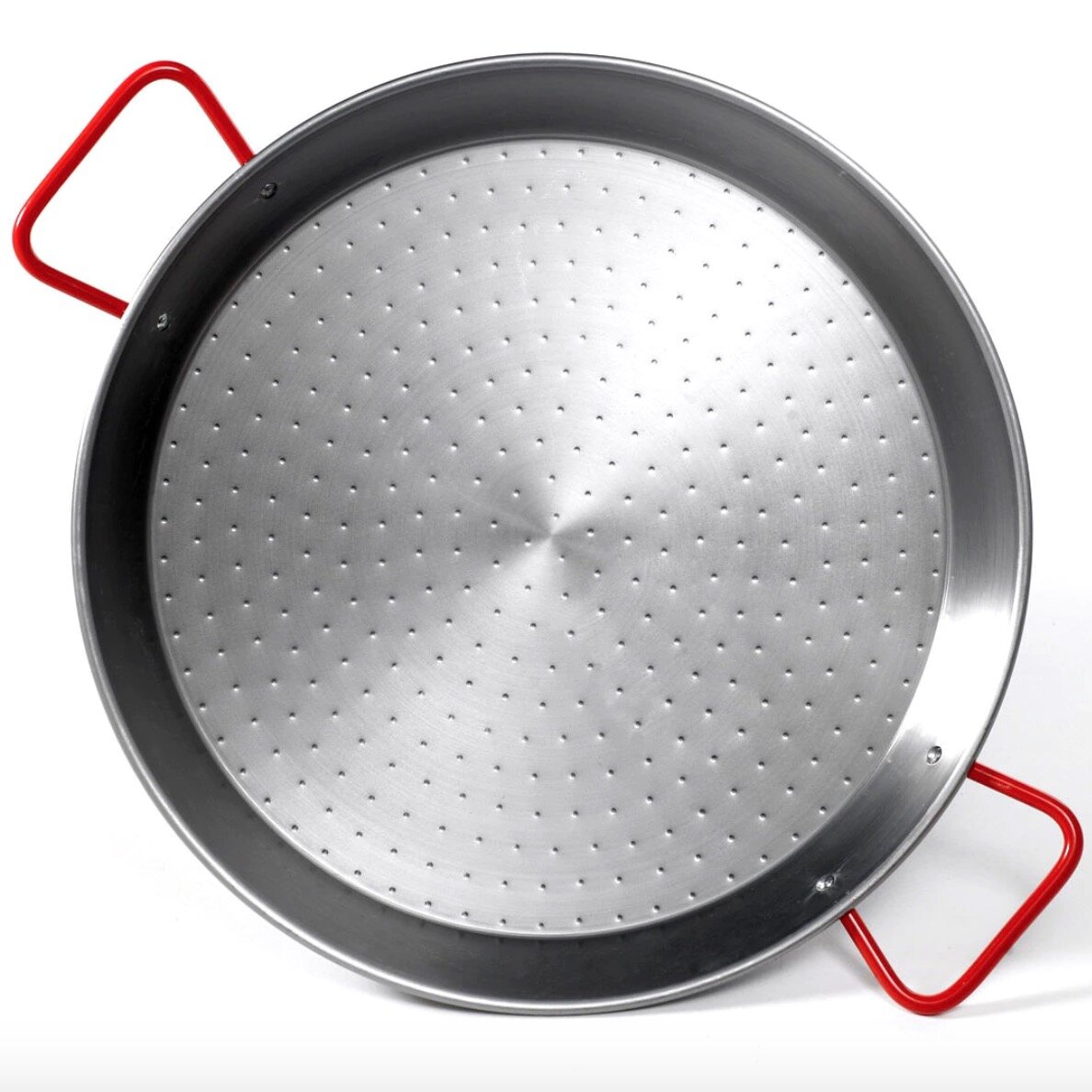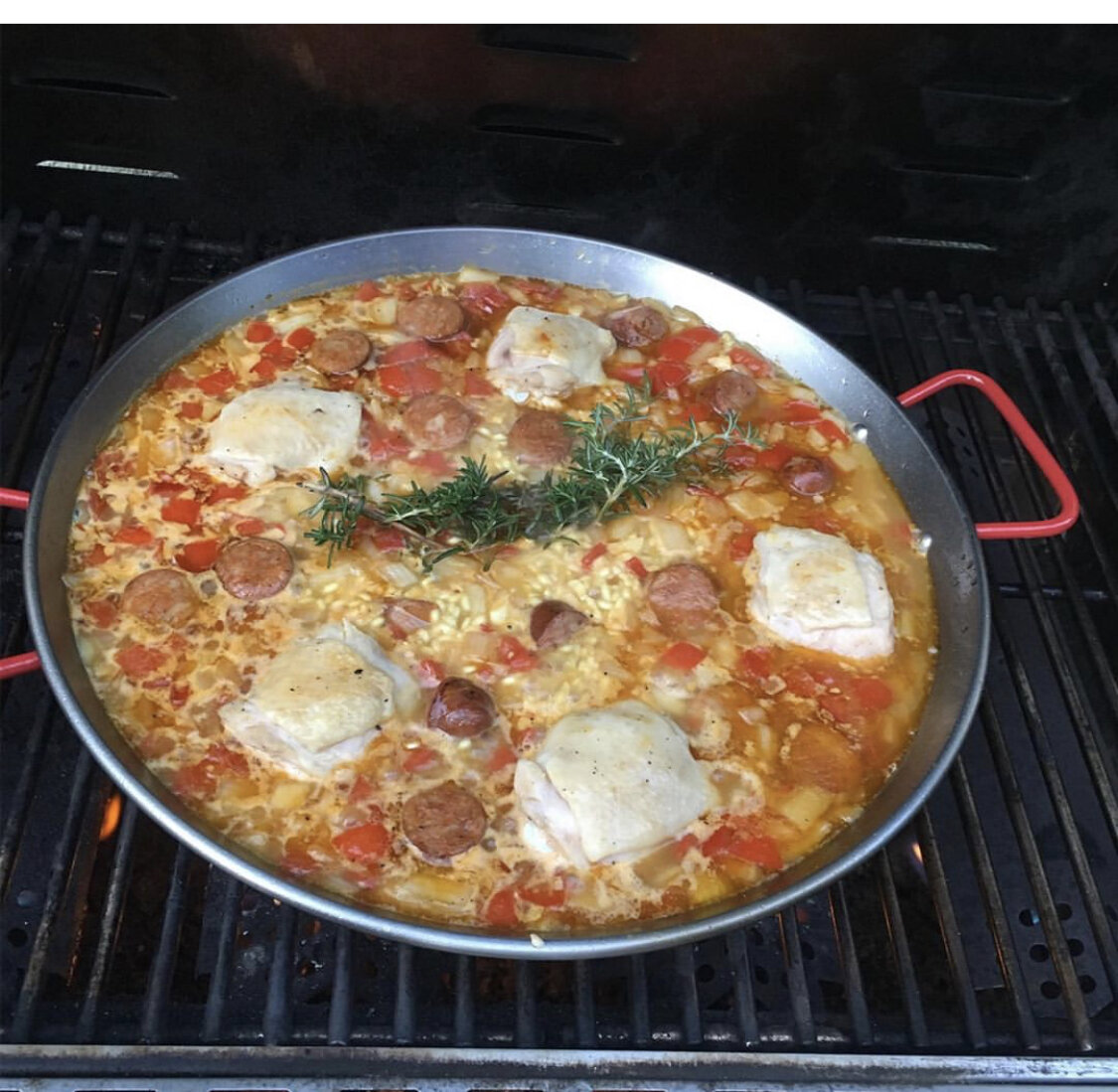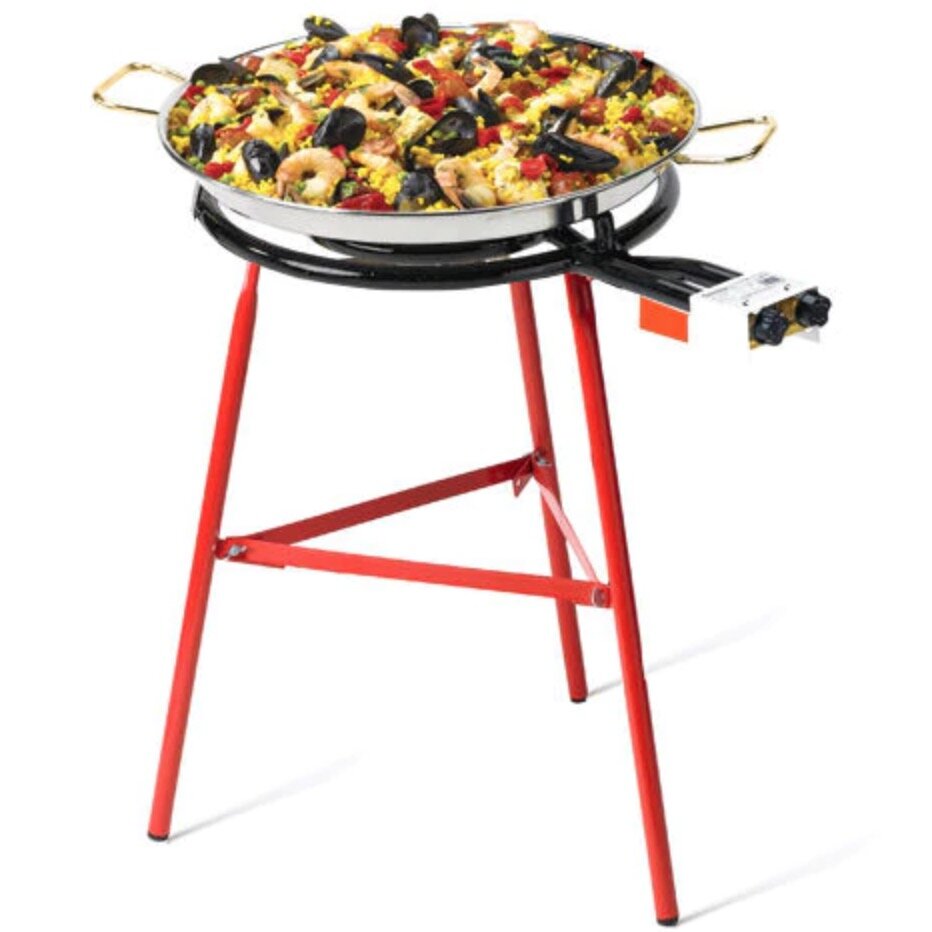Yosmar's Choices: Paella Pans
Photo: Elgin Woodman
Whenever I’m teaching a class or answering a question in the Let’s Cook Spain! Facebook group, the most common equipment questions I get revolve around paella pans. One of my culinary philosophies is that having the right tools and equipment can be the difference between a decent cooking experience and a great one. And using the right pan to make paella is probably the best testament to this philosophy. Below you will find some of the most common questions I get regarding this wide, shallow vessel that has become emblematic of the amazing food of Spain!
Are they really necessarily?
Yes, yes, yes… a paella pan is indeed necessary! I’ve seen people preparing paella in a braising pan or even in a cast iron skillet. These pans are usually not as wide and shallow as a paella pan and the ingredients tend to get overcrowded and uneven. Authentic paella is pretty evenly distributed throughout the pan and never overflows. In addition, these other types of pans are not as wide as a paella pan, they do not promote the evaporation of liquid in the same manner. This often leads to some overcooking and makes the creation of the coveted soccarat, the caramelized crust of rice that often forms on the bottom of the pan, more difficult.
What size pan should I buy?
This will depend on two factors… How many people you want to feed as well as the size of your cooking source. Typically, for stovetop paella, I like using a 13.5-inch (34 cm) diameter pan. Theoretically, these pans serve four people. But I often manage to serve six or seven out of one of these pans, particularly if I am also serving tapas along with the paella. This size is ideal because the heat will reach most of the surface of the pan cooking its contents evenly. If you use any pan larger than 15 inch (38 cm), the heat will only reach the center of the pan and the rice on the outer edges of the pan will not cook as quickly or thoroughly. To ensure even cooking, you will need to move the pan around to ensure the heat reaches the entire surface of the pan. Now think how cumbersome this can get when your pan is full of stock…
What material should my paella pan be made of?
With one exception, I typically recommend a traditional carbon steel pan. They are inexpensive and do the job just right! The one instance where I don’t recommend carbon steel pans is if you are preparing your paella on an induction or smooth (glass) stovetop. While carbon steel is a compatible material for induction cooking, paella pans made out of this material are slightly concave and thus don’t make proper contact with the burner and many induction cooktops won’t work properly. So instead you will want to get a double gauge steel pan, as it is totally flat and lies flush on the burner insuring proper cooking. This pan is a bit heavier and more expensive than a carbon steel one, but its craftsmanship is amazing! In addition to carbon steel or double gauge pans, you will find enameled pans as well as stainless steel pans. Enameled pans are also pretty traditional but I find that because of their enamel coating, they are not very good for achieving soccarat. But if you don’t mind that, then they are also a pretty acceptable pan.
Are they any paella pans you don’t recommend?
Although I own a very beautiful cast iron paella pan (it was a gift with a great deal of sentimentality to me) and it is featured in my book, I don’t recommend one… They are slow to heat up and once heated, they retain too much heat, which gives you less control of the cooking process. And for the same reason, I also don’t recommend stainless steel pans. In addition, while they maybe quite beautiful pans, they are also excessively expensive and this is somewhat contrary to the down-to-earth atmosphere that comes with making paella!
What do I need to prepare a large paella?
I often make paella on the grill outside as I can fit a larger pan on the grill than on the stovetop. If you are using wood or charcoal, in the beginning the fire will be stronger which is what you want when you are browning your protein right at the start of the paella making process. As the wood or charcoal burns, the heat will mellow out which is what you are looking for once you have added the stock.
If you don’t have a grill or the paella you are preparing is too large for your stovetop burner or even your grill, then you will definitely need either a paella burner set or a forged iron paella stand. A paella burner set is a tripod stand topped with a butane burner made out of several concentric rings. Because of these concentric rings, the paella pan has even heat throughout and cooks evenly. A forged iron stand is ideal if you have an open fire pit. You simply put the stand inside the pit… light the wood and put the pan on top of the stand.
Where can I buy paellas pans?
First a confession… I currently have downsized to only about 6 paella pans… It may seem excessive but when you start making paella frequently, you will want to have a few different sizes depending how many people you are entertaining. In addition, depending on the size of your heat source, it is often easier to make two medium sized paellas than one ginormous one!
Now back to where to get your paella pan… I’ve bought some of mine in Spain at an independent housewares store in Santiago (Casa Sole) or at the El Corte Inglés department store in either Barcelona or Madrid. But I’ve also bought some stateside at La Tienda in Williamsburg, VA or at The Spanish Table in Berkeley, CA. Both stores have a large assortment of different sizes and materials. In addition, they sell burner sets and stands.
Do I need to do anything with my paella pan before I use it the first time?
If you decided to go with my recommendation of a carbon steel or double gauge steel pan, you will need to season it before using it. All pans come with an anti-rust coating from the manufacturer that you will want to remove before using it for the first time. Wash your pan under hot water with soap. Rinse and dry thoroughly. Then take a wad of paper towel and moistened it with vegetable or olive oil. Rub the oil on the pan and then put the pan over heat for about five or six minutes. Alternatively you can put the pan in a 400°F for about 10 minutes. Whichever method you chose, you will want to repeat this process two more times. After that your pan is ready for use. If you decide to buy an enameled pan or stainless steel pan, you do not need to season the pan.
How do I maintain my pan?
After washing your carbon steel or or double gauge pan after each use, dry it thoroughly. After drying it with a kitchen towel, I often put it on the burner for five minutes to ensure every drop of moisture is gone. Then with a paper towel, rub some vegetable oil on it and put it away. This thin oil film will create a barrier with the air and help avoid rusting. Before using it next time, just wipe the pan with a paper towel and you are ready for a fabulous experience!
Now go make your favorite paella! My book, Tastes of the Camino, has a great recipe for chicken and seafood paella. Alternatively, you can try my recipe for seafood fideuá, a paella made with thin noodles instead of rice.
Any questions? Just email me at yosmar@whiskandspatula.com or join the Let’s Cook Spain! Facebook group
¡Buen Provecho!







